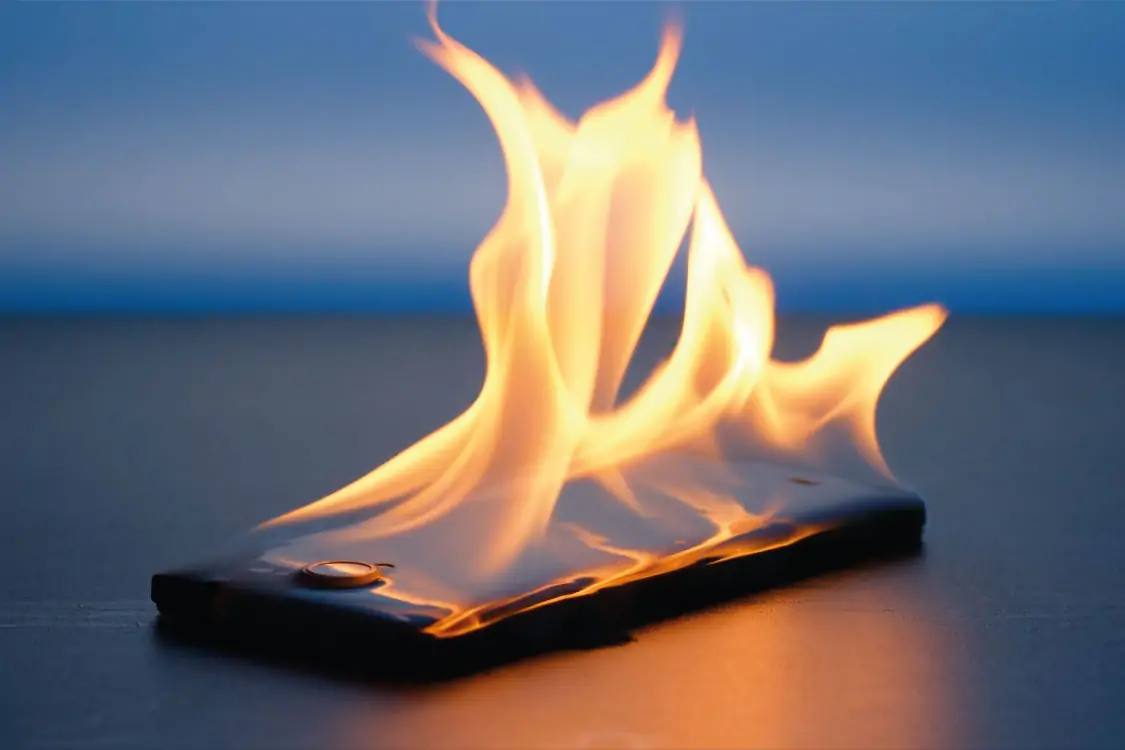Lithium-ion batteries are prevalent in electronic devices such as laptops, tablets, smartphones, cameras, interactive whiteboards, or smartboards in classrooms may have built-in lithium-ion batteries for wireless functionality due to their rechargeable capabilities. While these devices enhance the learning experience, it is crucial to be aware of safety precautions to mitigate potential risks associated with lithium-ion batteries. The average life span of a lithium-ion battery is typically limited to 2 to 3 years from manufacture. The lifetime limitation will occur whether the battery is in use or not.
Lithium-ion batteries are small and lightweight but are capable of storing a large amount of energy. As a result of these characteristics, they are volatile under stress, therefore, if damaged or incorrectly charged they can be a fire risk. Warning signs that a lithium-ion battery pack or cell is likely to fail include the battery appearing to bulge or swell, sometimes accompanied by other signs such as discharging too fast and/or the battery is hot to the touch. Once a battery fails or ‘runs away’ the cells usually start to give off smoke. Thermal runaway is the chemical process within the lithium-ion battery, it produces heat and flammable toxic chemical gases very quickly, often before any flame appears.

Charging Stations
- Designate specific charging stations for electronic devices within the premises. Ensure these areas are deemed suitable, e.g., these areas need to be assessed as part of the Fire Risk Assessment process.
- Ensure that these stations are well-ventilated to dissipate heat generated during charging.
- Follow the manufacturer’s instructions at all times.
- Ensure items are not left unattended when charging and are turned off when the battery is fully charged and arrange for one device or battery to be charged at once.
- Avoid overnight or unattended charging to prevent overcharging incidents.
- Place visible reminders near charging stations to reinforce the instructions given.
- Designate specific staff members to oversee and enforce charging safety guidelines, including routine charging station checks.
- Always use the charger that came with the device, If you need to buy a replacement battery or charger, always choose a branded, genuine product from the manufacturer. There are lots of fakes out there, and it can be difficult to spot the difference.
- If the device has not been used for quite some time, be extra careful when you charge it – lithium-ion batteries don’t like being discharged to a very low voltage.
Training and Awareness
- Provide training/awareness sessions on lithium-ion battery safety for staff responsible for managing devices. The session needs to include:-
- The identification of potential risks associated with lithium-ion batteries, including overheating, fire, and explosion.
- Tailored guidance for devices commonly used in your setting (e.g., laptops, tablets, smartphones). Specific precautions for each type of device.
- Avoiding overcharging and the importance of using approved chargers.
- Best practices for storing devices with lithium-ion batteries - temperatures and conditions.
- Recognition of warning signs such as unusual heat, swelling, or changes in device performance and procedures for reporting issues promptly.
- Importance of regular inspections for signs of wear, damage, or malfunction and procedures for replacing damaged batteries or devices.
- Actions to take in case of a battery-related fire, including the use of fire extinguishers.
- Proper methods for disposing of electronic devices and batteries at the end of their lifecycle.
- Access to written materials, videos, or other resources that reinforce key safety principles.
- Consider providing practical demonstrations on safe battery handling and charging.
- Simulated scenarios to test staff's knowledge and response in emergency situations.
- Recommend conducting awareness campaigns for students, emphasising the importance of responsible device usage and the prompt reporting of any issues.
Storage Guidelines
- Ensure electronic devices with lithium-ion batteries are stored in cool, dry places away from direct sunlight and humidity extinguishing systems.
- Ensure powering off devices when not in use to prevent unnecessary battery drain.
- Implement secure storage protocols for devices during non-operational hours to prevent unauthorised access.
Inspection and Maintenance
- Complete regular inspections of devices to identify any signs of wear, damage, or malfunction.
- Arrange for the prompt replacement of damaged batteries or devices and ensure that replacements meet safety standards, e.g. BS EN 62133-2:2017+A1:2021 (currently under review).
Fire Safety Measures
- Suggest the installation of fire extinguishers in strategic locations, especially near charging stations.
- Encourage educational sessions for staff on the proper use of fire safety equipment and emergency procedures.
- Due to the chemical nature of a cell fire in a lithium-ion battery, standard fire extinguishers, such as foam and water, will not suffice. Flooding the battery with water is the only way to extinguish a lithium battery fire. Additional fire extinguishment can be utilised through the application of various other forms of fire protection, such as Dry powder extinguishers, carbon dioxide extinguishers, Water mist and Fire blanket systems.
Disposal Procedures
- Lithium-ion batteries are classified as hazardous waste when they reach the end of their life. Thus, used batteries must be packed separately from other materials, especially severely damaged batteries, as these can be extremely flammable.
- Introduce procedures for the disposal of electronic devices and batteries at the end of their lifecycle, e.g., a collaboration with certified e-waste recycling facilities to ensure environmentally friendly disposal practices.
Emergency Response Plan
- Prepare a clear emergency response plan in case of battery-related incidents and communicate to all staff.
- Establish protocols to ensure that staff know how to respond to overheating, smoke, or other signs of battery malfunction.
By adhering to these safety guidelines, you can prevent fires and collectively contribute to creating a secure environment.
 As we get into the season of cheer and winter months M&J want to bring you some safety tips.
As we get into the season of cheer and winter months M&J want to bring you some safety tips.


